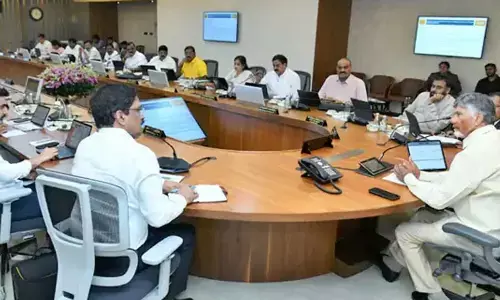Exclusive: Chinese car sales boom in Russia levels off amid shaky local recovery
Share :

Chinese car sales in Russia appear to have peaked as domestic production recovers after the exodus of Western automakers, data shared with Reuters showed, but recent growth in the market may stall as high import costs and interest rates begin to bite.
MOSCOW: Chinese car sales in Russia appear to have peaked as domestic production recovers after the exodus of Western automakers, data shared with Reuters showed, but recent growth in the market may stall as high import costs and interest rates begin to bite.
The figures are early indicators that Russia's car market, and China's role in it, have stabilised after nearly two years of upheaval caused by sanctions placed on Moscow and Western companies' sudden exit in the wake of the invasion of Ukraine.
But the sector, which saw an almost 60% slump in sales in 2022 and production sink to a post-Soviet low, is still a long way from its pre-invasion levels. Sales and output in 2023 are set to be among the lowest in the last 10 years.
Prior to the February 2022 invasion, Chinese cars accounted for less than 10% of the Russian market. In August this year, Chinese brands' share of sales peaked at almost 56%, data from analytical agency Autostat and its partner consulting company PPK showed.
That percentage has now levelled off, with Chinese brands selling around 60,000 units each month since August, corresponding to a 53% share in September. Sales include imported vehicles and those made inside Russia.
Chinese carmakers such as Haval (601633.SS), Chery and Geely (0175.HK) are capitalising on the departure of Western players that used to dominate the market before the invasion of Ukraine, showing Moscow's increasing dependence on Beijing and growing economic ties with China as the West shuns Russia over the war.
Russia has jumped from 11th place to become China's largest export market for cars, reaching a value of $9.4 billion in January-October, Chinese customs data showed. In the same period of last year, car exports to Russia amounted to $1.1 billion.
Overall, monthly car sales in Russia are now more than double what they were a year ago, Autostat data showed, while separate data from federal statistics service Rosstat showed car production was nearly three times higher in September year-on-year, underlining the sector's partial recovery.
Chinese carmakers were crucial in that process, but with demand now largely satisfied there is a ceiling for their further expansion in the sector, Autostat Executive Director Sergei Udalov told Reuters.
"The market has reached a state of equilibrium - the main Chinese brands have come to Russia and (pent-up) demand is satisfied," Udalov said.
Russia's leading carmaker Avtovaz, which produces the most popular Lada cars, is catering to demand for cheap cars, while Chinese brands are filling the gap left by Western producers for more expensive vehicles, Udalov added.
That trend could change should either Avtovaz or Chinese carmakers seek to dip their toes into different pricing categories, Udalov said, but for now, despite depressed sales and production, the market's prospects for growth are slim.
'UNSTABLE, SHAKY' MARKET
Sanctions against Russia contributed to lower car production and sales most notably in 2022, but also after Moscow annexed the Crimean peninsula from Ukraine in 2014.
Sales have not topped 2 million vehicles since 2014 and production has been lower, too. Just over 626,000 new cars were sold in Russia in 2022 and almost 830,000 were sold in January-October this year.
A modest recovery is underway from 2022's lows, but the loss of Western technology and expertise is hurting the sector, analysts say, even as Chinese carmakers bed in at some of the factories vacated by their Western counterparts.
In the first three quarters of 2023, Russia produced only a few thousands more cars than in the same period of last year, Rosstat's data showed, but the figures are now trending upwards.
"The growth of pent-up demand that started in late spring and lasted through August started to run out of steam in September," said economist Natalia Zubarevich, a professor at Moscow State University.
Wages have been rising, partly due to above-target inflation, but four interest rate hikes since July to 15% mean that although people have more money, credit is far more expensive.
"The (key) rate should have a depressing effect (on car loans), and this should reveal itself in October and November," Zubarevich said.
Meanwhile, the rouble's slide to 100 against the dollar this year has made imports more expensive, depressing purchases of Chinese cars. It has since recovered to around 90.
The central bank this month said a ban on imports of some Japanese cars, combined with rouble weakening, was pushing up prices of foreign cars.
Avtovaz last week lowered its 2023 production forecast of 400,000 Lada cars by up to 10% in response to U.S. sanctions on Russian industry in September, which specifically targeted Avtovaz.
"The market is in a highly unstable, shaky state," said Zubarevich.














